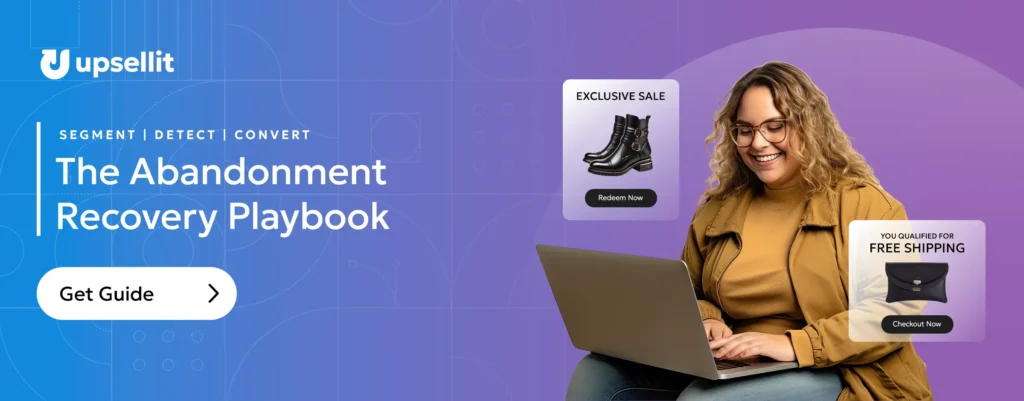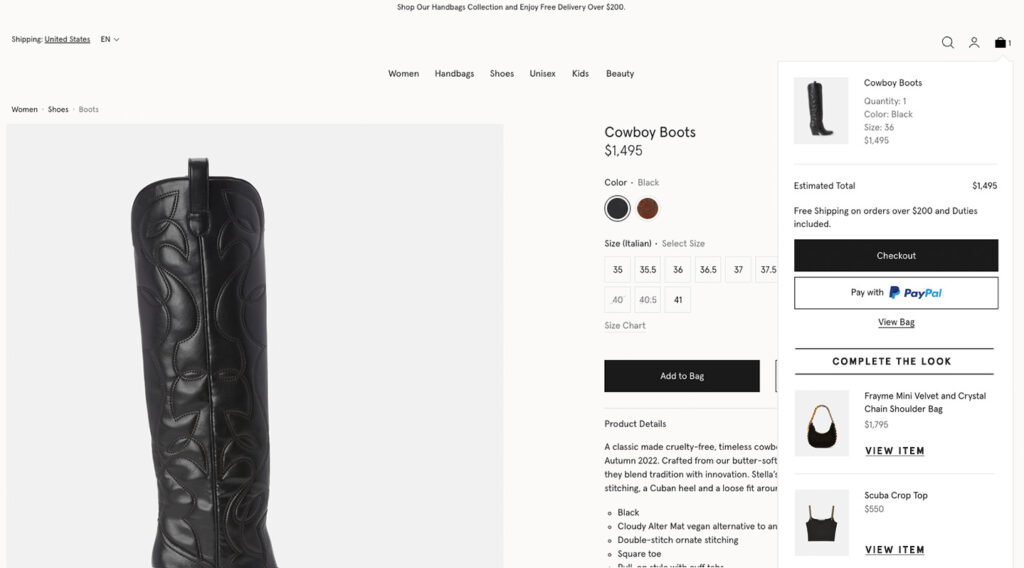In today’s world of smartphones, businesses trying to reach mobile users face challenges like limited screen space and short attention spans. A successful mobile campaign needs short, personalized messages.
However, it’s not just about making content fit smaller screens; it’s about creating impactful content that inspires quick action. What works for desktop users might be too detailed for quick-scrolling mobile users.
This blog explores ways businesses can connect with mobile users by tailoring solutions to their specific needs. Learn how to maximize your mobile campaign performance and unlock the full potential of your marketing efforts in the ever-changing digital communication landscape.
Understanding the Mobile Landscape
According to Statista, mobile ecommerce sales hit $2.2 trillion, comprising 60% of global transactions, emphasizing the need for businesses to understand and cater to mobile user preferences.
Mobile users display distinctive behaviors and preferences, often engaging in quick browsing sessions and favoring easy-to-navigate sites that allow them to find products or information quickly. To perform well in the mobile landscape, brands must craft a user-centric experience.
First, let’s pinpoint distinctions between mobile and desktop shoppers in order to fine-tune your mobile strategy specifically for smartphone users.
Tailoring Content for Mobile and Desktop Shoppers
Understanding how users behave on mobile versus desktop is crucial for success. Consider the differences between a casual mobile window shopper and a desktop user ready to purchase after thorough research. Tailoring your strategy to meet the unique needs of each type of shopper is key to an optimized experience.
On mobile, visually appealing graphics and high-quality images are vital due to limited screen space. These visuals not only enhance the user experience but also reinforce brand identity and showcase products effectively when relevant.
On desktops, users have larger screens and more computing power at their disposal, allowing for a more immersive and detailed browsing experience. Desktop users are often more patient and willing to engage in research, making long-form content, such as blog posts or product guides, effective in their decision-making process.
Minor differences set mobile and desktop shoppers apart, but there’s much more to explore. Let’s examine four campaigns to see how mobile and desktop campaigns differ. These findings will guide you in creating improved mobile campaigns.
Mobile vs. Desktop Campaign Examples
Content Placement
In mobile campaigns, space is limited, but skipping essential messages is not an option. Instead, strategically position brief and impactful information to capture mobile users’ attention without overwhelming them. This highlights the significance of design and a user-focused approach in optimizing mobile campaigns.
Here’s an example of a campaign where content placement was optimized for mobile users to account for the limited space on mobile platforms.
Desktop
In the desktop campaign, shoppers with an active cart were shown a dynamic engagement upon abandonment. The engagement showcased cart contents, as well as the recent views and purchases of the desired item, emphasizing product popularity. The accompanying persuasive copy incentivized them to complete their purchase.
Mobile
In the mobile campaign, content is tailored to fit mobile screens, prioritizing crucial messaging by removing larger background imagery due to limited space.
To resonate with the swift pace of mobile shoppers, the call-to-action was changed from “Continue” to “Grab Yours.”
The mobile version remains concise for quick consumption, while maintaining the style of the desktop engagement.
Graphics and Call-to-Actions
As users shift to smaller screens, improving visuals and creating effective calls-to-action are key for boosting conversions. When optimizing a mobile campaign, focus on the main message and goals to streamline the experience by removing unnecessary elements.
Desktop
The desktop campaign was directed at new shoppers, engaging every new user with an incentive. The call-to-action ”Redeem” automatically applied the $50 incentive to users’ carts.
Mobile
In the mobile version, the campaign was aimed at the same audience, but both the graphics and text were made more concise. Unlike the previous mobile example, the background imagery was kept, as the brand values visuals in their engagements. Additionally, the call-to-action was changed to “Details” so users could learn more about the discount, as the engagement no longer specifies it’s only for first orders.
Device-Based Personalization
Adapting experiences for different devices goes beyond just mobile and desktop—it includes variations between Android and Apple devices, and more. By tailoring the user experience to the specifics of each device, brands can create a more user-friendly and successful shopping journey.
Android and iOS Campaign
In this campaign, shoppers received in-page product recommendations tailored to their devices. By detecting the device type, Upsellit strategically personalized messages for Apple and Android shoppers, delivering relevant product suggestions based on their specific devices. For instance, iOS users were recommended Apple airplay-compatible products, ensuring the optimal product match for their preferences.
Engagement Location
Strategically placing engagements is crucial to capturing the attention and interest of the target audience. In a campaign for a women’s fashion brand, the optimization of engagement location was carefully executed for both desktop and mobile devices. The placement ensures a cohesive and visually pleasing presence across devices, enhancing user interaction and maximizing visibility.
Desktop
In this campaign, product recommendations were positioned within the shopping cart—an arrangement commonly known as a MiniCart. Placing recommendations beneath the shopper’s cart ensures a seamless visual integration, allowing shoppers to effortlessly spot and consider the suggested items.
Mobile
Considering the limited screen size on mobile devices, the campaign underwent refinements to seamlessly align with the mobile experience. While maintaining consistency in copy, design, and placement, the product recommendations were placed on the cart page, strategically nestled between the shopping bag and order summary sections. This not only maintained the prominence of the recommendations but also optimized for a more straightforward mobile platform, which, notably, lacks a MiniCart feature.
Mobile vs. Desktop Abandonment Detection
Understanding how to personalize for mobile and desktop goes beyond on-site interactions; it also involves detecting when users are about to leave. It’s crucial to recognize how mobile and desktop users behave differently online.
When detecting abandoning shoppers, the way someone moves their mouse on a desktop is different from how they scroll on a mobile device. Plus, tracking abandonment on mobile is more challenging due to limited screen space, navigation, and quick movement.
Upsellit’s mobile exit detection is designed to accurately identify users on mobile devices who are about to leave a website. Users often show they’re about to leave by quickly scrolling to the top of the page, and our technology recognizes this as a reliable sign of an impending exit. Making sure mobile abandonment is accurately detected ensures that campaigns not only work well, but also adapt to the unique mobile experience.
Elevate Campaigns with Tailored Mobile Offers
Another opportunity to elevate your mobile campaign is by offering SMS and push notifications. These personalized communication channels present a unique opportunity to engage users directly on their mobile devices, fostering a more immediate and intimate connection.
SMS Campaigns
Using SMS allows businesses to send short and impactful messages, ensuring that important promotions, updates, or exclusive deals reach users instantly. The direct and immediate nature of SMS communication enables brands to capture attention promptly, making it an effective tool for time-sensitive offers or promotions.
For instance, a brand could send SMS reminders to shoppers about items left in their carts, encouraging them to complete their purchases.
To find out more about capturing SMS leads, read our guide SMS Lead Generation: A Guide to Capture & Convert Text Leads.
Push Notifications
Simultaneously, push notifications elevate user engagement the same way—by delivering timely and pertinent updates directly to users’ devices. These notifications act as a direct gateway to your mobile campaign, enticing users to discover new offerings, discounts, or exclusive content, thereby enriching the overall user experience.
For instance, a brand might deploy push notifications to remind shoppers of time-limited promotions, enticing them to revisit the site.
The collaboration between tailored mobile offers, SMS, and push notifications not only adds a layer of personalization to your campaigns but also ensures that your brand remains at the forefront of users’ attention in the competitive mobile landscape.
Conquering Challenges on the Mobile Platform
Optimizing campaigns to perform well on mobile devices requires strategic consideration in content placement, graphics, call-to-actions, and device-based personalization. With tailored solutions that avoid the one-size-fits-all model and an understanding of the behaviors of mobile and desktop users, brands can maximize conversions and overcome the challenges with mobile devices.
Learn More About Upsellit’s Advanced Abandonment Technology
Mobile and desktop shoppers exhibit distinct browsing patterns when it comes to abandoning websites. Upsellit’s Exit Detect Playbook explores our most effective ways of recovering both mobile and desktop shoppers precisely at the moment of site abandonment.
Upsellit employs targeted campaigns and advanced technology to reach the right shoppers at the right time, enabling online businesses to collect new leads, convert new customers, and increase customer lifetime value. Learn more about how Upsellit’s abandonment technology can help you target shoppers at the perfect time.








